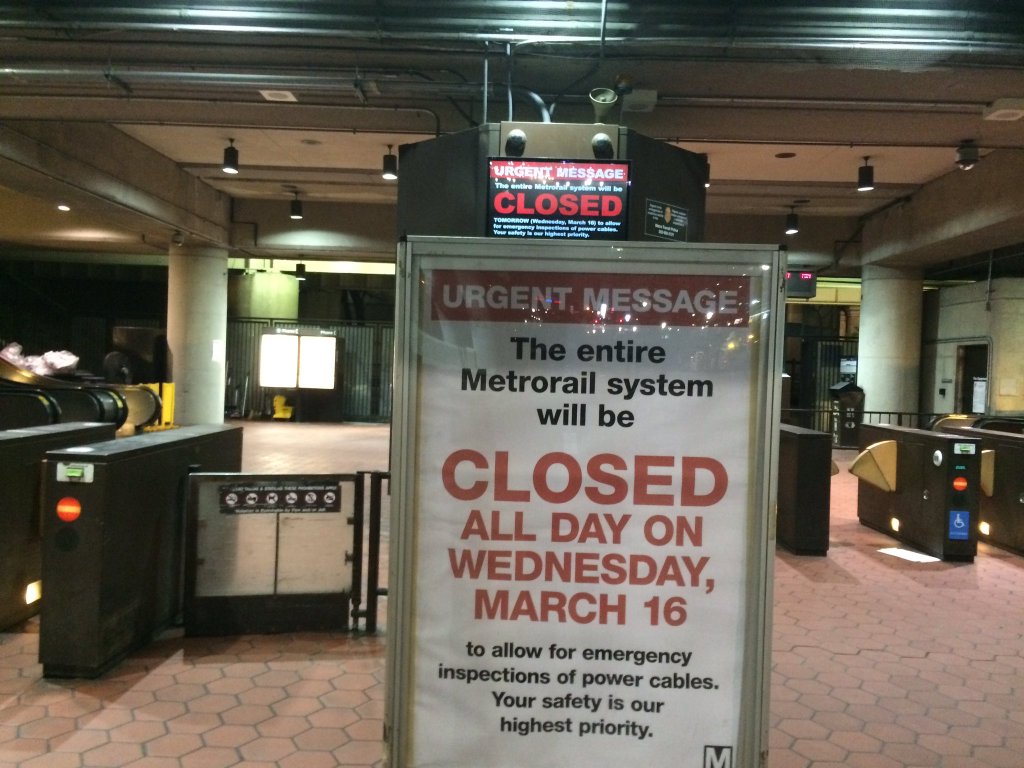WASHINGTON – When the entire Metrorail system shut down for a day, there were warnings of traffic chaos. Now, early data from the shutdown shows where traffic screeched to a halt, where telework may have saved the day, and the parts of the region where drivers were largely unfazed.
By jurisdiction, the biggest increases in traffic delays were in D.C., Arlington and Alexandria, with an estimated 14 percent spike in congestion during what became an extended morning rush hour.
Across the region, Metropolitan Washington Council of Governments data presented Friday to the region’s Transportation Planning Board Technical Committee suggests the afternoon rush hour was much less congested than usual during the March 16 shutdown, as drivers shifted trips around or avoided them entirely.
Drivers with the worst rides during the shutdown appear to have been on roads downtown, Interstate 270 in Maryland, Interstate 395 through Arlington and Alexandria, and Interstate 295 and D.C. 295, which of all saw delays longer than a typical Wednesday.
The preliminary data shows “inner suburbs” like Montgomery, Prince George’s and Fairfax counties largely tracked the regional changes for the day, but suburbs farther from Metro stations had relatively insignificant traffic changes during the shutdown.
Kanti Srikanth, the Council of Governments’ director of transportation planning, is hoping to gather more information about exactly how many people teleworked during the Metro shutdown and to get more data from the Maryland and Virginia departments of transportation.
“What we know so far is a number of people altered their travel timing or their travel route, or completely eliminated their trip by teleworking or taking their flexible leave,” he says.
While Metro only announced the shutdown around 4 p.m. the day before, Srikanth believes the difference between that and an announcement or emergency that caused a shutdown with much less notice is dramatic for commuters and businesses.
When combined with information about traffic before and during the January blizzard, Srikanth says it becomes clear that the key to easing the impact of major disruptions to any part of the region’s transportation system is to communicate clearly with everyone as far in advance as possible to allow people to prepare.






